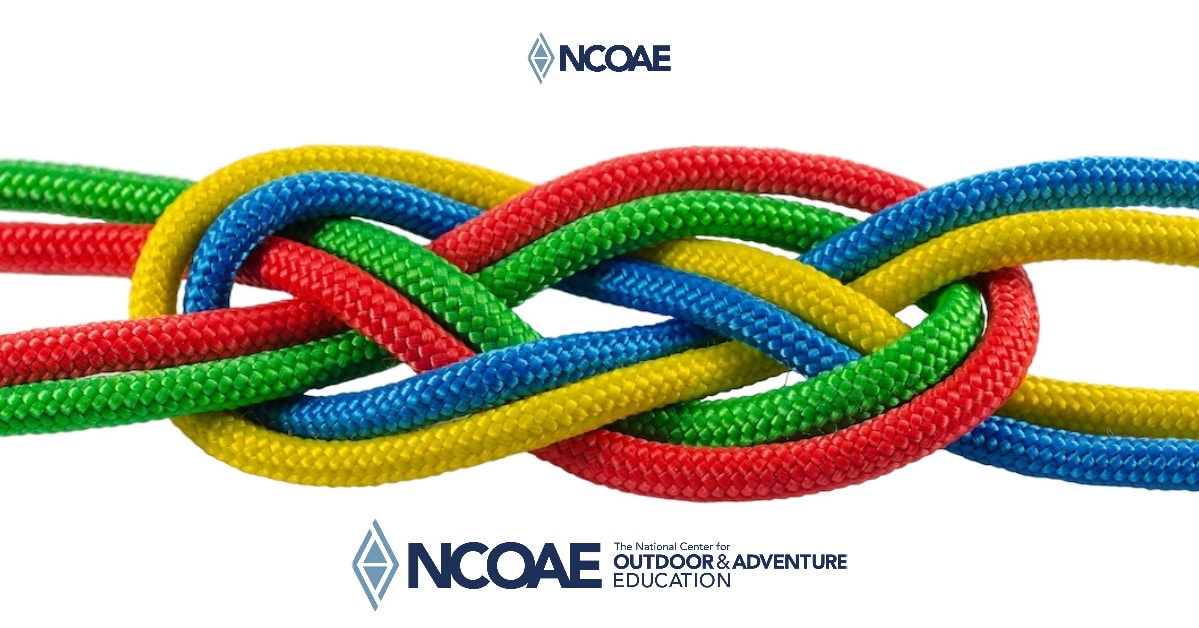Because of the situation with COVID-19, we’ve been thinking a lot lately about the path forward for outdoor and adventure-based programs like the ones we offer here at The National Center for Outdoor & Adventure Education (NCOAE). Specifically, how do we operate in a day and age where physical distancing is either required or strongly recommended? That’s where Collective Impact may come into play.
The concept of Collective Impact takes into consideration the notion that industry players need to coordinate their efforts and work together in order to create lasting solutions to shared and common societal challenges and problems.
Put simply, collective impact is a structured form of collaboration. The term garnered national recognition in 2011 when it was touted by the White House Council for Community Solutions as a powerful framework for solving social issues. The concept became so popular that “collective impact” was selected as among the top philanthropic “buzzwords” for that year.
With the current conundrum of coronavirus facing our world today, we here at NCOAE are of the opinion that solutions for COVID-19-related issues from any qualified source is worth considering. And, if you or your organization is of the same mind, we would love to hear from you. We can listen to each other’s challenges and maybe we can help each other discover solutions to those problems associated with operating an outdoor and/or adventure-based program in the time of coronavirus.
Since this crisis evolved in mid-February, we have been working up schedules and then reworking them. And, because our work crosses into many sectors — including schools, businesses, and government agencies — and because we deal with multiple states and international borders, we find ourselves dealing with a lot of moving parts.
The good news, of course, is that our staff has evolved to become a finely tuned machine. We’re able to juggle a lot and do it well. But that still leaves us wondering how the greater outdoor and adventure education industry may be grappling with the same or similar challenges as we’re contending with.
As most successful adventurers and explorers do, we set out to do some research. And here is some of what we’ve discovered so far:
- Whether we like it or not, outdoor and adventure education programming — including summer programs with students that are of middle and high school age — may be viewed in some states and jurisdictions as childcare. Childcare programs may be considered “essential” and therefore have room to remain open, so parents and caregivers may return to work or continue to work from home. This approach as to who’s considered essential puts our industry on the front lines, and we need to respond appropriately.
- We looked closely at start dates for outdoor offerings similar to ours and found these vary from organization to location, with some expeditions already underway and others waiting for June, July, and later to commence.
- We also found that some wilderness and backcountry providers are feeling more secure in their safety measures than organizations that primarily offer day trips / programs. That’s likely because long-term programming may allow for more deep and meaningful health screening.
- On a more practical level, many organizations with whom we spoke are thoughtfully changing wilderness course routes to reduce the likelihood of crossing paths with other groups. At the same time, they’re keenly aware of the “Leave No Trace” edict that guides outdoor visitors to “Be Considerate of Other Visitors.” For some, that means it’s no longer good enough to just step off the trail to let another hiker pass. Some are rightly asking themselves if they need to come up with procedures to step back six feet off the trail.
- Moving to more remote, seldom-used course areas is also an option for some of the organization’s we’ve contacted. However, these trail systems might impose greater restrictions on group sizes, which then impacts programming and course fees.
- From a transportation standpoint, we found that some organizations are wondering about delivering students to trailhead drop-off areas. A group trip from a local airport seems logical but may not be safe due to challenges associated with physically distancing inside of a van.
- Another big question — especially for multi-day courses: What does a student’s return home to family look like? What happens after two weeks or a month in the backcountry? Is the student safe? Is the family safe for the student to return to? Good questions.
Which brings us back to the Collective Impact model. Planning in the age of coronavirus calls for us to meet with as many organizations as possible to discuss — with transparency — our programming, areas of operation, group sizes, protocols, and legitimate concerns and worries. For our part, we are committed to working together across company lines to make outdoor education and recreational users feel safe and good about the service and experience we offer participants.
Which is why we need to continue talking, sharing information, asking more questions, and possibly suggesting industrywide guidelines and solutions. This isn’t new for us. We already have recognized industry standards (thank you, Association for Experiential Education), as well as ongoing research and dialogue on risk management (thank you, Wilderness Risk Management Conference).
We look forward to a collaborative effort to confront all of our questions, concerns, or ideas. We’re at a new crossroads, and as our industry often has, we need to move forward with collective thought and safety. It’s that or face another — potentially longer — hit to the pause button, or worse.
TALK TO US
Have any further questions about our courses, what you’ll learn, or what else to expect? Contact us, we’re here to help!

Leave a comment